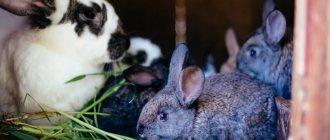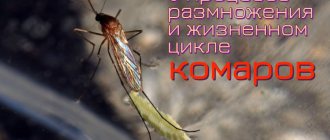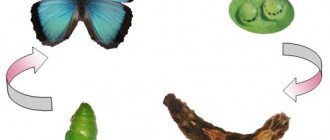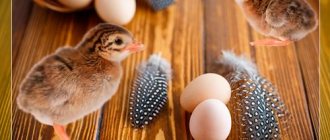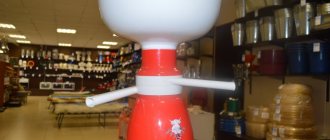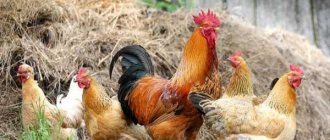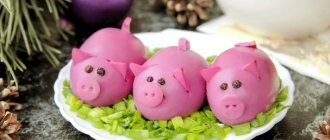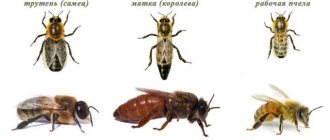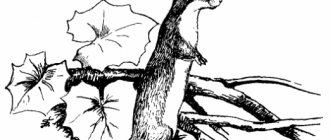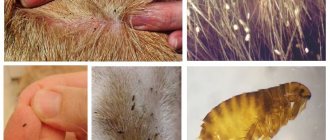A school biology course explains in general terms how birds reproduce. And yet, many aspects of this issue remain a mystery to most people. Birds are oviparous creatures, among which there are no viviparous species. Science explains this by the fact that the bird lives most of its life in flight. In this article we will talk about interesting features of bird reproduction and facts that you most likely did not know about.
Seasonal processes
Finding a partner, courtship and reproduction in birds in the wild are considered the most complex processes. This is due not only to the peculiarities of instinctive behavior. We are talking, first of all, about the complex structure of the reproductive system of birds.
The bird's body is equipped with paired genital organs and tracts. Only their left halves are used for reproduction. The reason is that large eggs are not formed in paired ovaries.
The male is sterile all the time outside the mating season. Its seminal fluid is generated exclusively during the courtship and reproduction stage. This signals that he is ready for intercourse. The mating season of birds occurs in spring and summer. At the same time, with the onset of spring, their testes grow in volume almost a thousand times.
General characteristics
Before we talk about how birds mate and reproduce, let's discuss their characteristics and the biology of this class of warm-blooded oviparous birds.
The distinctive features of birds are as follows:
- The nervous system is highly developed.
- Various options for adaptive behavior.
- The body has a high temperature. This occurs due to the intensive metabolism of the bird class.
- Compared to other animal species, this species is endowed with a special mechanism that facilitates the rapid reproduction process. This feature is manifested in the ability to hatch eggs, as well as in feeding chicks.
- The presence of special organs called adaptive. They make it possible not only to fly, but also to move freely on land. And some individuals can also swim in bodies of water, moving freely along the water surface.
It is these above-mentioned abilities that allow birds to reproduce so actively and massively throughout the planet.
Stages of creating offspring
The appearance of offspring involves several important points.
First: nest construction. In polygamous couples, the females do this. Birds that mate for life build a home together. Nest shapes, construction materials and sizes vary depending on the species of birds.
Second: hatching the eggs after they hatch. Bald patches form on the female's abdomen at the location of the eggs. This contributes to the formation of an optimal temperature regime, which is 38°-40°C. Not all birds develop so-called “roost” spots. In particular, geese hatch their eggs under a layer of down.
Third: protection of the nest and food. This is the task of males. While the partners are busy incubating, they play the role of breadwinners and protectors.
How to determine fertilized eggs?
If a poultry farmer breeds chickens for the purpose of hatching chicks, it is very important to know whether the resulting egg is fertilized or not. Laying hens lay eggs in any case and regardless of the presence of a rooster, but chickens reproduce only with the help of males. Unfertilized eggs do not hatch into chicks - this is because such eggs do not contain an embryo.
A fertilized egg can be determined by the presence of a small amount of blood clots in the yolk. Clearance is required for blood detection. Three things can help identify fertilized eggs:
- natural bright lighting;
- artificial light source;
- Ovoscope is a special device for instant determination.
The egg of interest must be taken to a dark place. It is placed with its blunt end towards the light, after which it is tilted so that the internal contents can be examined in detail. The greatest difficulties arise with the clearance of brown eggs, so for placing under a chicken it is better to select specimens of light shades, ideally white. There is no need to examine the contents for a long time: thanks to the intense light, identifying the embryo will not be difficult even for a novice poultry farmer.
In a fertilized egg, several blood vessels are observed in a small area in the lumen. If during observation no blood clots or black spots are detected, the egg is not fertilized and is not suitable for hatching.
There are also cases when it is impossible to determine the presence of a clot and spots in the center of the yolk, but at the same time a blood contour along the edge is clearly visible. This indicates a fertilized egg, in which the embryo died for one reason or another. Such specimens will also not bring any benefit when breeding chickens: none of them will hatch.
Mating in birds
This process in birds differs from similar manipulations in mammals. The reason is that birds do not have a special opening, and their reproductive tract extends to the cloaca.
The breeding pattern of birds is as follows: the male presses his cloaca to the area of the partner’s cloaca and injects seminal fluid into it. The sperm moves into the oviduct, where it is stored from several days to several weeks. Fertilization occurs in the initial part of the oviduct. Afterwards, the egg moves towards the cloaca, gradually becoming overgrown with layers of shells. In the female's uterus, the eggs are covered with a dense calcareous shell, after which they are ready to fall out of the cloaca.
Sections of the female oviduct
The oviduct, on one side, is connected to the cloaca, and on the other, to the body of the bird. It consists of a couple of compartments. The first contains special glands that secrete protein. The egg stays here for about six hours, where it is covered with a special protective layer.
In the second section it is thinner; the shell membranes begin to cover the egg.
Another section is the uterus. The egg comes here for 20 hours. During this time, it begins to be covered with lime shells, as well as other coloring pigments.
And the last section. It's called the vagina. It is from here that the egg ends up in the cloaca and then comes out. The time it takes for an egg to “travel” through the oviduct is on average 24 hours. It's from the chicken. But the dove’s is already longer, 41 hours.
Reproduction and nesting of urban birds
Not everyone knows how the birds we see everywhere mate. The mating system of most birds is identical. Let's look at some of the nuances using the example of birds that live near us.
For example, pigeons. They have two types of mating:
- within natural conditions,
- forced mating.
In the first case, the male chooses a partner independently. In the second, the female candidacy is selected by a person based on optimal parameters and physical characteristics. Pigeons hatch chicks after 17 days.
Crows build a new nest every season. Their favorite places are trees in squares, courtyards and parks. The mating season falls on March-April. The clutch does not exceed 6 bluish eggs. The incubation time for crows is 19 days.
How do pigeons mate?
If we consider the mating of pigeons, it is important to remember that in these birds there are two options for implementing the described process - artificial and natural copulation. If the breeding of pigeons occurs in nature or without the participation of a breeder, then the male chooses the other half himself. In the case of artificial reunification, the pairing of pigeons is based on the choice of the poultry farmer. Birds that have created a pair on their own are able to not leave each other for years; if the male and female mate at the request of the breeder, the relationship will not last long.
The mating season of any bird species is regulated by hormones; active changes occur in the gonads at this time. The sexual structure of individuals of both sexes has similarities, but they are still structured differently.
In females, the ovaries are grape-shaped; in males, nature forms a pair of testes, from which a thin canal extends, i.e., birds have gonads for reproduction.
For those who do not know how pigeons reproduce, it is worth clarifying: the period of sexual maturity in birds begins at 1-2 years. By these years, birds acquire good immunity, their body is finally formed. The fertility of flyers lasts up to 10-12 years. Pigeons are capable of feeling, they have a well-developed sexual instinct, and they perform mating games. If the female likes the male, then she begins to bow to her partner and make certain movements towards the male. Mating of a pair occurs soon after the birds meet. When meeting for the first time, individuals press their bodies together, kiss with their beaks and pinch the feathers on their necks.
Breeding poultry
We will talk about birds that are most often kept on farms. Among them are turkeys, geese and chickens. The process of their mating occurs under human supervision and control.
Sexual maturity of birds occurs on the 25th day of life. In egg-laying breeds (chickens, geese), this occurs several days earlier. Mating occurs with 10 females at once and is repeated at least 50 times a day. If the number of females is exceeded, empty eggs may appear.
So, the male climbs onto the hen, grabs her neck with his beak and transfers seminal fluid through the cloaca. Sperm stays in the female's body for about 20 days. All this time, the hen regularly lays eggs.
Fun fact: Roosters do not have a reproductive organ. Some species of poultry (geese, ducks, ostriches) have a genital organ in the form of a cloaca turned outward.
To determine whether an egg is fertilized, a flashlight and an ovoscope are used. If there is a blood clot inside the egg, then the chick will soon be born.
Rooster selection and fertilization problems
Any chicken breeder sooner or later faces a situation where a rooster cannot fertilize a sufficient number of females or ceases to be capable of the process at all. There may be several reasons for such an incident:
- Age. A bird that is too young or too old cannot perform its “marital duty” at the required level or cannot do it at all.
- New environment. A new rooster may not trample hens until he gets used to the new environment and team.
- Stress. Stress harms not only people, but also birds. Excess noise, temperature changes, lack of food, excessive or insufficient lighting and many other factors do not improve the reproductive function of the rooster.
- Genetics. Cases of hermaphroditism occur in chickens. A hermaphrodite rooster will not perform its functions.
The male begins to fertilize hens at about three to four months of age. In the case where the rooster is too young, the farmer simply needs to wait until the bird reaches reproductive age. However, even a mature rooster may sometimes need extra time to gain experience and confidence in this delicate process.
For a spacious chicken coop with many hens, it is recommended to keep two or more males: they will be able to demonstrate from their own experience how to behave with females and create healthy competition.
Taking a leading position in the flock and finding a common language with all its inhabitants can be a problem for a rooster. When the appearance of a new male in the chicken coop results in female aggression, it is better to remove the rooster from the flock into a separate pen. In the future, chickens will gradually be added to him. Such actions will contribute to the emergence of the male as the new leader of the chicken coop.
The solution to stress-related problems is again time. The bird needs to be given time to get used to the changed living conditions. Sometimes it is necessary to eliminate factors that unnerve the bird: stabilize the temperature, normalize daylight hours, change the diet, etc.
Two roosters in one yard: leveling out conflicts
If the poultry yard is organized for the purpose of obtaining chicks, it is impossible to do without males. However, they have difficulty getting along with their competitors: other contenders for the female often show aggression.
Methods for resolving conflicts between male roosters, geese, and turkeys:
- choose males from one brood,
- give preference to balanced individuals,
- let one of the two be younger, since he will show less attention to females,
- transplant the young animals to the old rooster, and not vice versa, since strong individuals in their territory will kill the old weakened rooster and continue to fight among themselves for the new territory.
It is extremely important to avoid civil strife, since all male activity should be aimed at creating offspring.
How does a rooster and a hen mate?
At the beginning of mating games, the rooster walks around the hen and scratches the lowered wing with his paw. Males are often observed to exhibit particularly generous behavior: he shares food with the female and generally pays increased attention to the individual he likes.
The molting period radically changes the behavior of both representatives of a delicate process. During the seasonal change of plumage, the hens are left to their own devices, while the rooster beats and drives his relatives away from his prey.
With the end of the molt, everything returns to its place: the rooster again becomes charming towards the hens he likes.
The mating process begins with the so-called trampling - the rooster searches for an opening on the hen's back using his clawed paws. In general, the process of mating chickens is a rather harsh and unpleasant sight. During copulation, the male is on top of the female, holding the occipital plumage with his beak.
Sexual intercourse in domestic chickens is quite short-lived, but the process is enviably regular. Some healthy and young roosters can copulate with hens up to 20 times in one day.
Such consistency is not always good. The more often a rooster tramples hens, the less seminal fluid he has and the less concentrated it is. As a result, after such fertilization, eggs appear that will not produce chickens. Reducing the number of sexual intercourse in chickens by a poultry farmer, on the contrary, helps to increase the percentage of fertilized eggs and the appearance of viable offspring in the future.
You can see clearly how mating games and the mating process in chickens take place in this video:
Fallowing guinea fowl and quails in artificial conditions
Other types of birds are also bred on farms. These are guinea fowl, ostriches, swans, pheasants and quails. The priority for humans is to create favorable conditions for pets for comfortable reproduction.
Guinea fowl require large territories. Otherwise, they are unpretentious and very productive, and their eggs are larger than chicken eggs. In addition, they easily get along with other inhabitants of the poultry yard: chickens, turkeys, geese.
Keeping quails has become a profitable business, since their eggs are twice as expensive as chicken eggs, and the meat is considered dietary. The payback on breeding occurs quickly, the costs of the project are relatively low.
Males
From the characteristics we move on to the reproduction itself. And first I would like to talk about the reproductive system of male birds.
It works like this: each male has testes. In appearance, they resemble the most standard beans and are located approximately above the buds. They are suspended on the mesenteries, and their size constantly changes throughout the year. It is logical to assume that when the time comes to reproduce, their size jumps up sharply.
Growing conditions for chicken eggs in an incubator
There is a very striking example: in an ordinary yard starling, by the time of reproduction, the testes grow approximately 1500 times.
Regarding the internal part of the genital organs of male birds, there are special appendages that are fixed inside. From them the vas deferens diverge , which flow along the urinary system and enter the cloaca.
But as for the copulatory organ, in other words, the penis, there are a considerable number of bird species that were not endowed with such an organ. However, since reproduction must still occur somehow, in such species the function of the penis is replaced by a protruding cloaca. This problem is faced by ostriches, goose-like birds, and also tinama.
Breeding ostriches, swans and pheasants
Ostriches are polygamous, so one sire is enough for a harem. During the mating season, it becomes aggressive, and its legs and neck become reddish in color. During the day, the eggs are incubated by the partner; at night, the partner takes over this responsibility.
Swans mate for life. They build nests up to three meters in diameter, where they incubate 3-5 eggs for up to 40 days. The chicks are born already covered in fluff. Parents take care of their children for up to a year.
Males are aggressive and behave like roosters. Therefore, the same requirements apply to them. There are no more than three partners per manufacturer.
If the article interests you, share it on social networks and leave comments.
Expulsion
Main article: Playback modes
At some point, the growing egg or offspring must be expelled. There are several possible playback methods. They are traditionally classified as follows:
- The ovipositor is like most insects and reptiles, monotremes, dinosaurs and all birds that lay eggs that continue to develop after laying and hatch later.[13]
- Viviparity, as in almost all mammals (such as whales, kangaroos and humans) that carry their young alive. Developing young spend proportionately more time in the female reproductive tract. The young are later released to survive on their own, with varying degrees of assistance from the parent(s) of the species.[14]
- Oviparity, as in the garter snake, most vipers, and the Madagascar hissing cockroach, which have eggs (with shells) that hatch as they lay, making them similar to viviparity.[15]
Amphibians
Most amphibians have external fertilization, but there are exceptions for a few, such as salamanders, which primarily have internal fertilization. Male salamanders do not have a penis to insert and deposit sperm inside females. Their alternative to this consists of an enclosed capsule of sperm and nutrients called a spermatophore. The male deposits the spermatophore on the ground, and the female picks it up with her cloaca (the combined urinary and genital opening) and fertilizes her eggs with it.[21] Over time, amphibians have been found to evolve and increase internal fertilization. Within amphibians, highly evolved vertebrates are usually internally fertilized due to the transition from water to land during vertebrate evolution. There is an advantage for amphibians to fertilize from within, allowing them to choose when and where to reproduce.[23]
Fish
Some fish species, such as guppies, are capable of internal fertilization, a process that occurs when the male inserts a tube fin into the female's reproductive opening and then deposits sperm into her reproductive tract. There are other species of fish that have a mouth, which means one fish places the eggs in the mouth for incubation. The specific species of fish that are oral parents are called cichlids, and many of them are oral parents. The female lays an egg and takes it into her mouth. The males will then encourage the female to open her mouth so they can fertilize the eggs while they are in the female's mouth.[21] Internal fertilization in cartilaginous fishes has the same evolutionary origin as reptiles, birds and mammals, which fertilize internally. Also, in these internally fertilizing fish, when the sperm is transferred to the reproductive tract, there is no noticeable change in tone.[22]
Benefits of Internal Fertilization
Internal fertilization allows:
- female mate choice, which gives the female the ability to choose a mate before and after mating. The female cannot do this through external fertilization because she may have limited control over who fertilizes her eggs and when they are fertilized.[1]
- Deciding on the conditions of reproduction, such as place and time.[16] In external fertilization, the female can only choose the time at which she releases her eggs, not the time at which they are fertilized. It seems like a mysterious female choice.
- Protecting eggs on land.[17] While oviparous animals have either a jelly-like egg or a hard shell covering the egg, internally fertilizing animals grow the eggs and offspring within themselves. This provides protection from predators and from dehydration on land.[18] It increases the chances of survival when the mother has a regulated temperature and a protected area.

